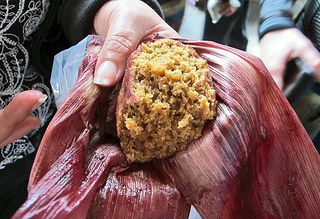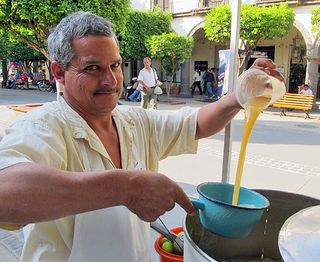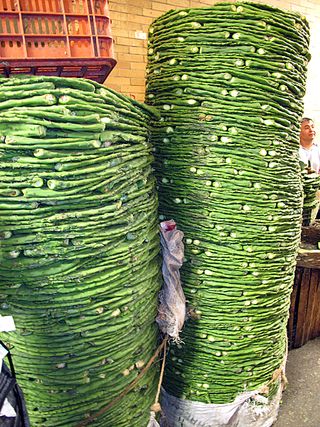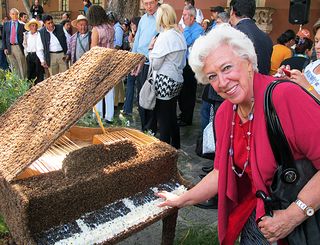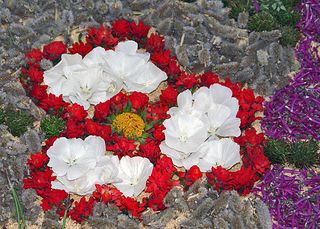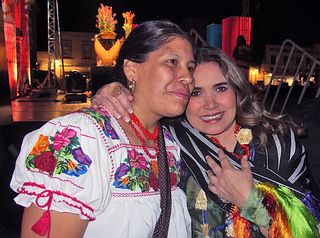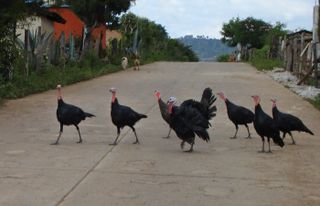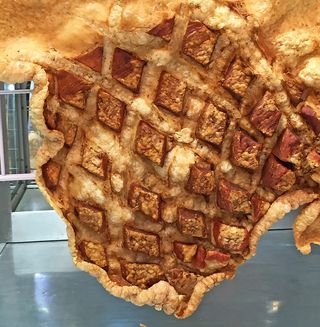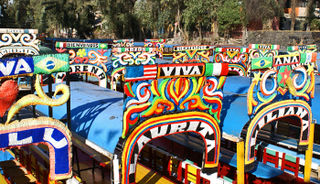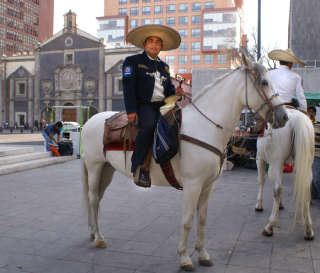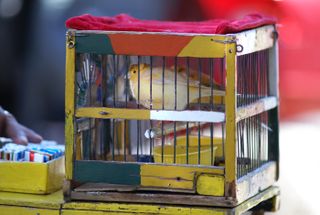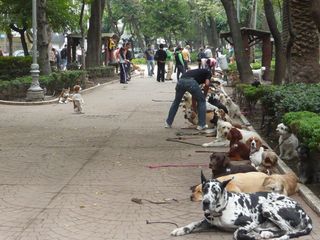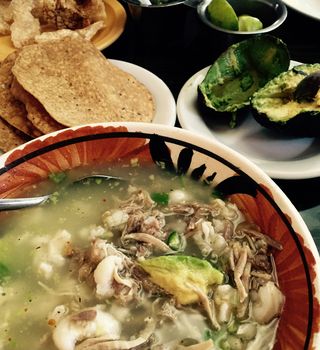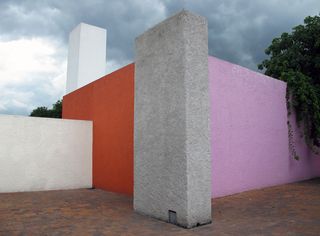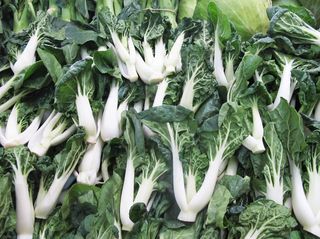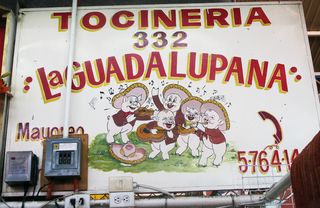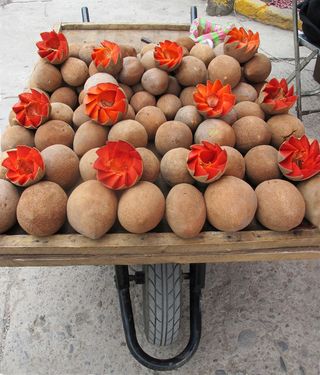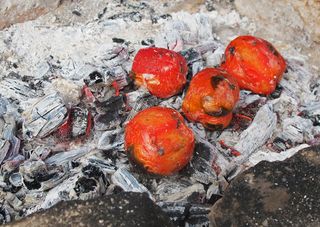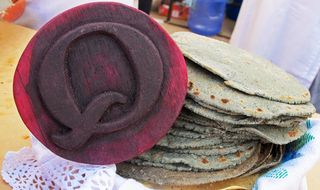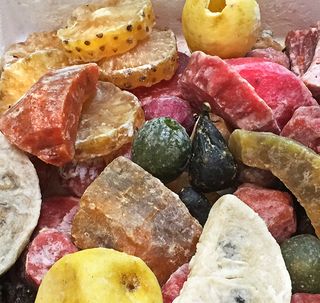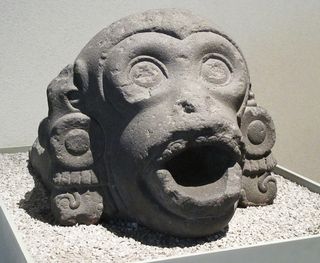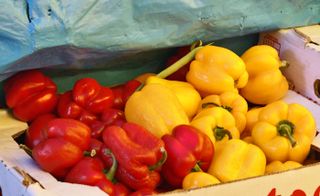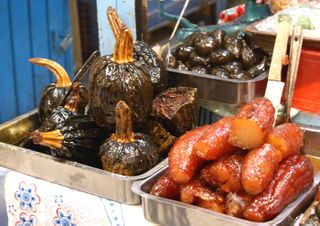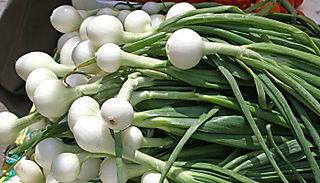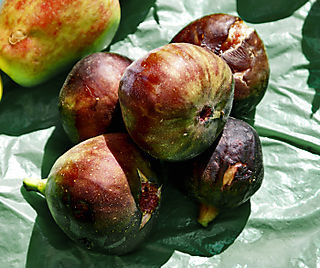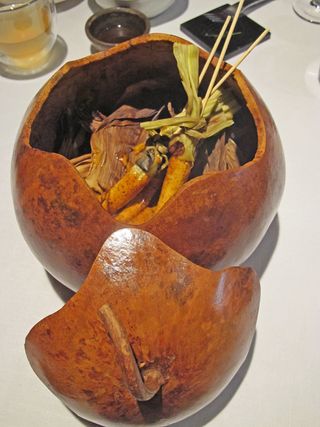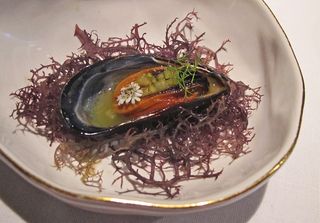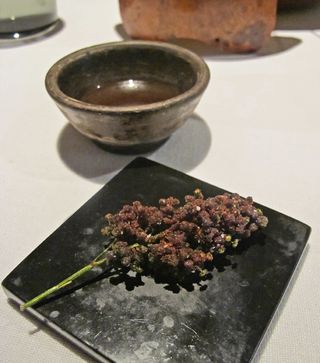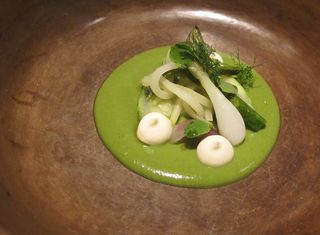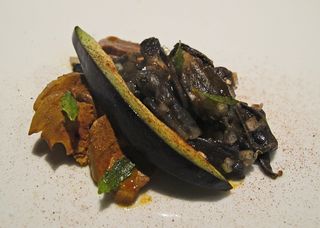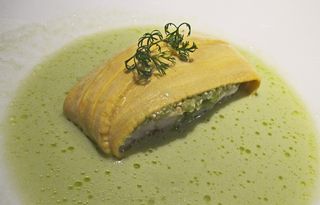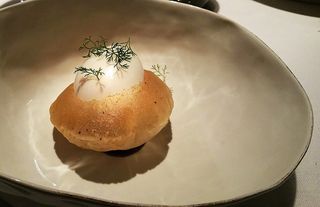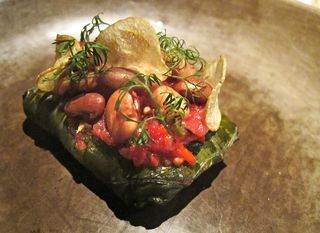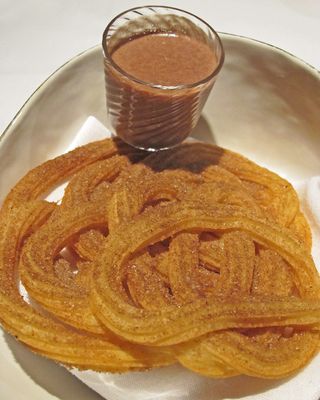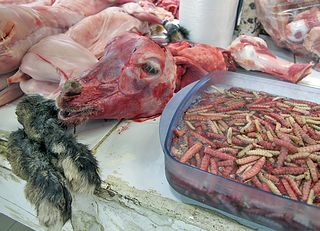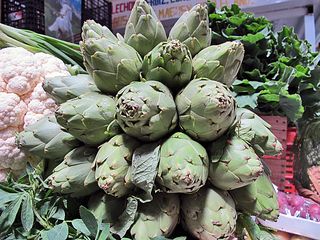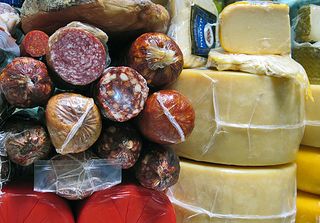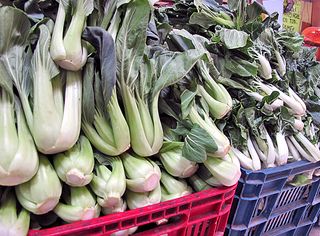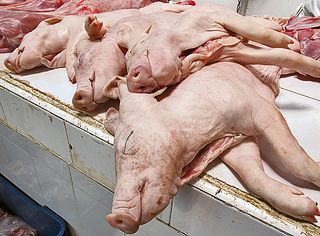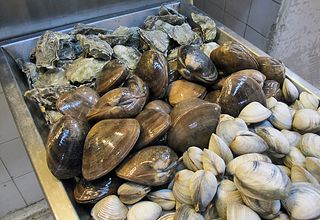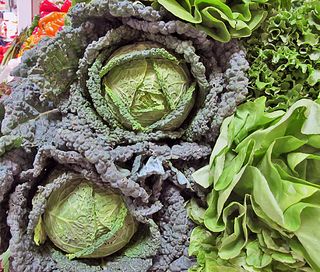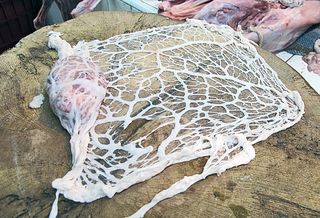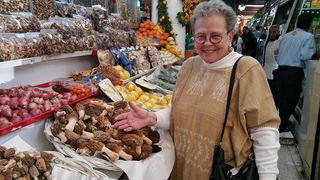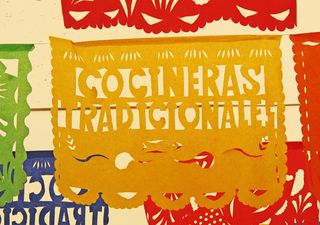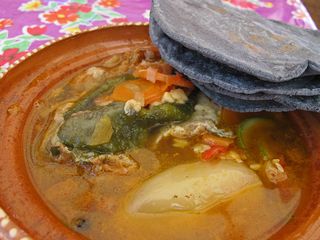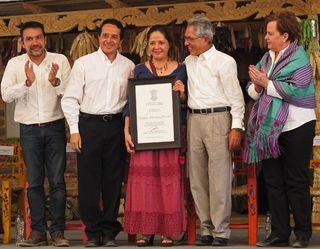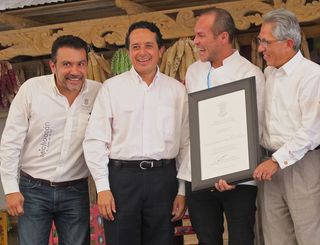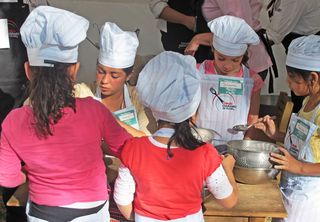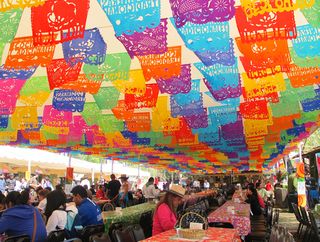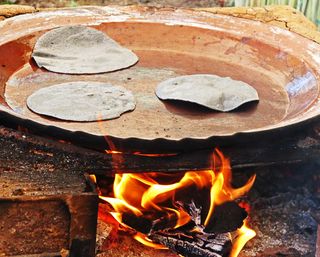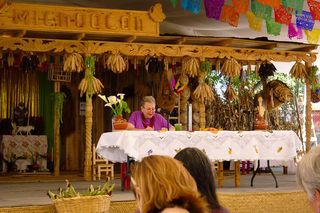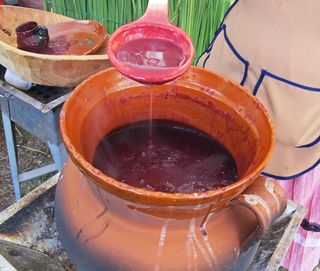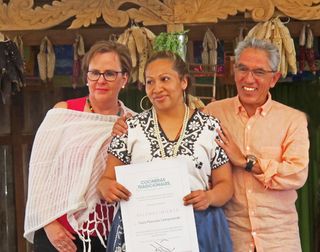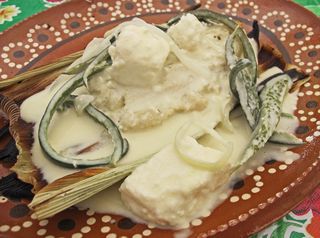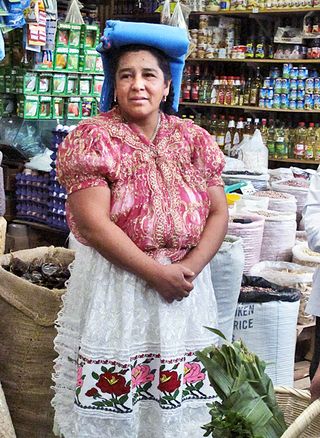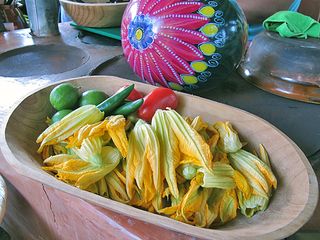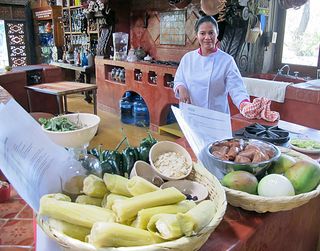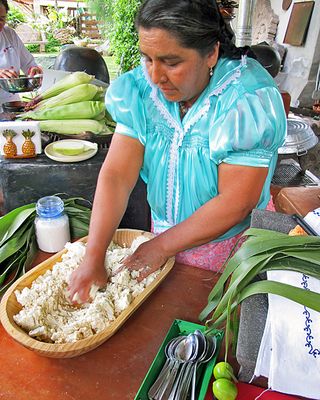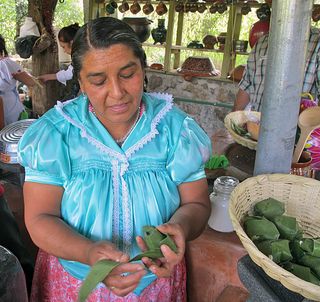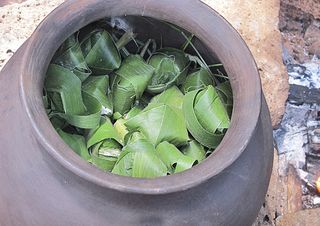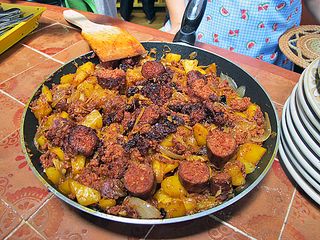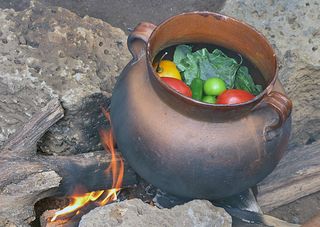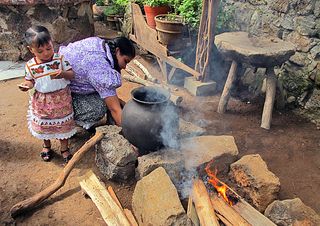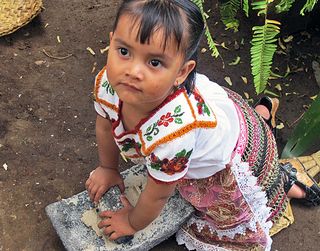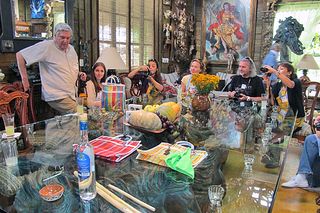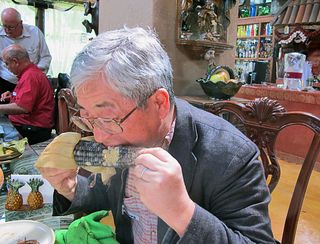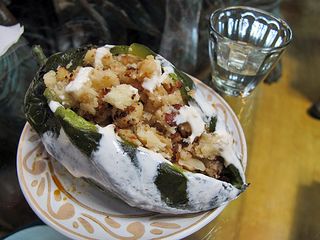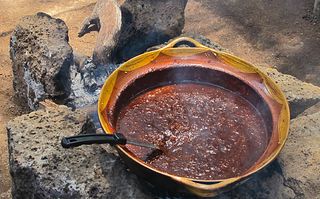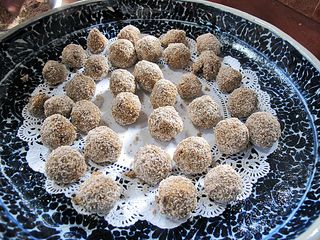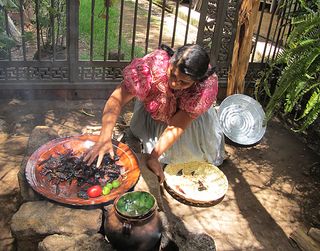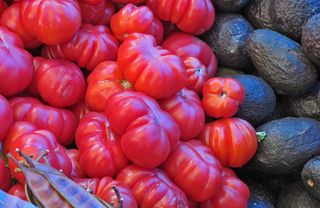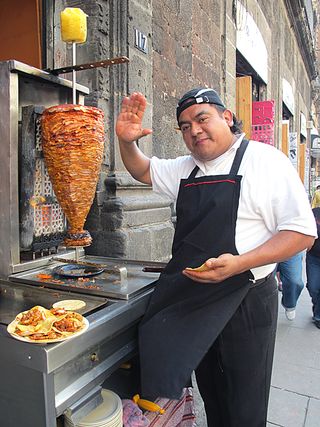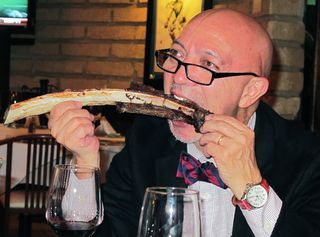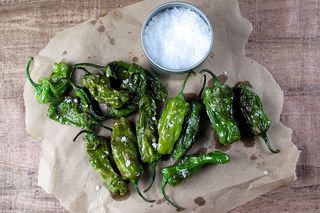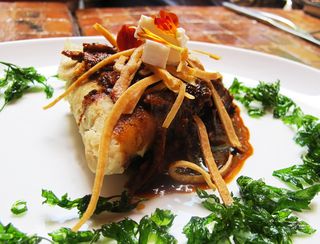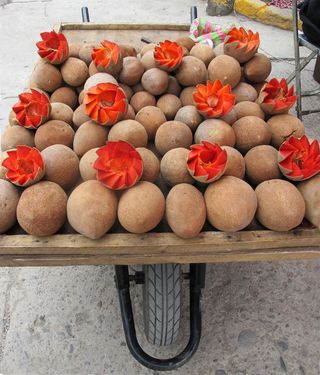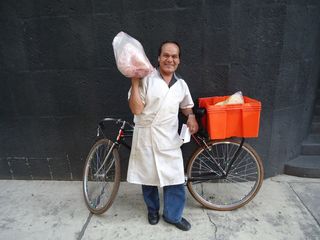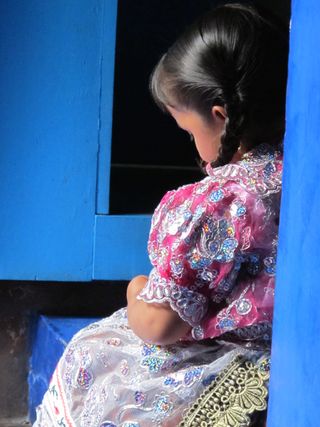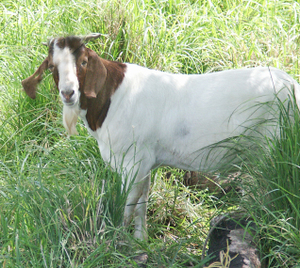
I had planned to photograph some membrillo (quince) trees, but at the orchard entrance I found myself just about nose-to-nose with the guard goat.
No matter where you're from, you've heard some interesting place names. In the United States, you'll find Medicine Hat, Wounded Knee, and French Lick. You might even live in a town called Eagle Knob, Summershade, or Bird-in-Hand. In Canada, Jerry's Nose, Heart's Desire, and Lower Economy are home to some brave souls. We're used to the rhythms of our town names and they roll easily off the tongue.
South of the border, it's another story altogether. One of the first challenges of an English-speaker's life is learning to pronounce local town names.
A town that's often troublesome to pronounce is about 40 minutes south of Guadalajara, just north of Lake Chapala: Ixtlahuacán de los Membrillos (eeks-tlah-wah-KAHN de lohs mehm-BREE-yohs). It's a mouthful. It's even difficult to write phonetically in a way that makes sense. But whether you can pronounce it or not, it's well worth a visit right around this time of year.
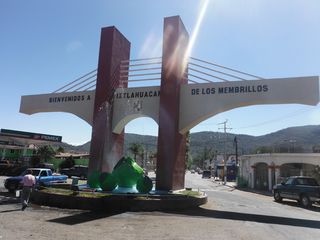
The entrance to Ixtlahuacán de los Membrillos.
Many towns and cities in Mexico are named for historical figures or events. Ixtlahuacán de los Membrillos is named, oddly enough, for a fruit. The membrillo is known in English as quince, and the municipality is renowned for its quince orchards, its artesanal quince products, and the annual Fiestas del Membrillo that take place late each summer in Atotonilquillo (ah-toh-toh-neel-KEE-yoh), a village in the nearby municipality of Chapala.
Curious about production of the fruit, I made an appointment to meet Ingeniero Jorge Alberto López Iglesias, head of agricultural development in Ixtlahuacán, to talk about how the town became so well known for quince production.
"In years gone by, there were enormous plots of land here devoted to growing huge orchards of membrillos. The fruit actually came over from Europe in the middle 1500s, with the missionary priests. At one time, this whole area was famous for the quantity and variety of fruit it produced. Even today, there are plum orchards on the hillsides. They're visible from the highway.
"When the town was founded, back in the early 16th century, it was just called Ixtlahuacán. After fruit production became really important here, ??especially the production of membrillos, ??the rest of the name was added. That happened around 1825. Since then, the town has used its full name: Ixtlahuacán de los Membrillos.
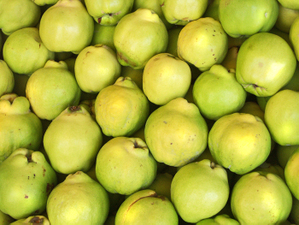
The membrillo (quince) looks a lot like an apple.
"The climate here is perfect for growing membrillos because we have four seasons. The membrillo needs heat, cold, light, and rain in order to produce well. Most of the time we have just the right amount of each of those components. Just think, the membrillo needs 100 to 500 hours of exactly the kind of cold that we have on these hillsides in January and February in order for the flowers and fruit to form. This year, though, the cold stayed very late and a lot of the flowers fell off."
"And when the flowers fall off, the fruit doesn't form, right?" I saw that Ingeniero Jorge was quite concerned about this year's fruit production.
"That's exactly what happens. Not only was it unusually cold for a long period of time this winter, the fruit also depends on las cabaañuelas (the very short January rainy season) to begin to grow properly. This year, we didn't have any winter rain until February and that delay also harmed the young fruit.
"Agriculture is always such a risky business, Ingeniero." I waited a moment for him to continue.
"Yes, even though technology has changed many aspects of agriculture, there are still things we can't control. For example, even with new irrigation methods, new pesticides, and new products such as shade cloth, we can't control Mother Nature. This year's summer rainy season also started late, and so far there has been much less rain than usual. There isn't any real way to predict what the heavens will send us.
"Now, unfortunately, the production of membrillos is substantially less than it used to be in this area. A lot of the big parcels of land have been divided into other uses." He held out his hands and shrugged. "What can we do? Times change."
Ingeniero Jorge's office mate, Verónica Zaragoza, chimed in from across the room. "But señora,the people here still use all the traditional ways of preparing membrillo, even if we have to bring some of the membrillo from somewhere else. We use several different kinds of the fruit: ??there's the common white one that has green skin, and the membrillo melocotón, a yellow fruit that's less acid than the white one, and the membrillo cristalino. The sweet flesh of the cristalino is almost transparent. And there's one other, the membrillo mostrenco. It's the first one of the season to ripen.
Verónica continued telling me that some of the fruit is sold raw, simply cut into pieces and topped with a squeeze of fresh jugo de limón (key lime juice), a dusting of powdered chile, and a pinch of salt. It's eaten as a snack or as an appetizer before a meal. In addition, membrillo is made into several kinds of ates (thick, stiff jellies) which are then sold by the kilo.
"You should go to the entrance of town, where the membrillo booths are, and talk to the vendors. They'll show you all the products and probably give you a taste of everything." Verónica smiled and she and Ingeniero Jorge shook my hand as we parted.
"I'm on my way to visit the booths right now," I promised.
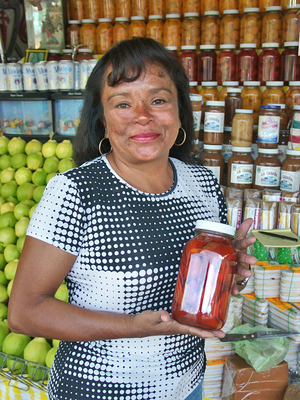
Sra. María Eugenia Zaragoza holds a jar of preserved membrillos.
Those of you who have been to the Lake Chapala area have undoubtedly noticed the string of ten or twelve booths along the east side of the highway near the entrance to Ixtlahuacán. The vendors sell honey, traditional candies, and other regional specialties in addition to the famous ates, ponche (punch), and conservas (fruits in syrup) made from membrillo. I stopped to talk with María Eugenia Zaragoza and her family about their home made products.
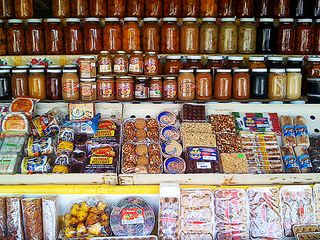
Conservas (fruit in syrup) line the top shelves; regional candies are on lower shelves.
Sra. Zaragoza pointed to each item as she told me about it. "We sell several kinds of ates. This rich-colored brown one is called martajada (rough chopped) because the fruit isn't ground up to a smooth paste. There are fruit chunks and peels in it, along with sugar and a little water. It sells for $30 pesos a kilo. Here, taste it." She cut a sliver for me.
"That's really delicious," I complimented her, wishing the sliver had been a bit bigger. "And what's that one over there, the rectangular one?"
She held up the carefully wrapped package and explained that it was called molida (ground) because the quince is ground to a smooth paste prior to cooking. "This one is the same price as the martajada, $30 pesos a kilo. It's all home made," she smiled. "Would you like to see part of the process?"
We walked into the rear of the booth where her husband was peeling what looked like a mountain of membrillos. "This is Poli Herrera, and this is what he does. He's in charge of peeling all the fruit, cutting it in half, and taking out the heart, where the seeds and their coarse coverings are." Poli held out his wrist for me to shake: ??his hands were clean but damp from the fruit.
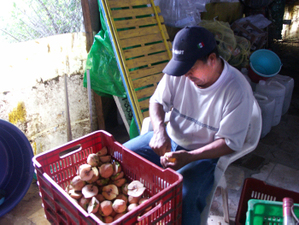
"After the fruit is peeled and cored, it's washed well and put to parboil so that all the juices start to flow. Then the sugar is added and it's all cooked until it turns that rich dark brown color and thickens. We do the cooking in our kitchen at home. You have to be really, really careful to make sure it doesn't burn.
Next Sra. Zaragoza showed me a big crate filled with beautiful freshly made ates martajadas. I was amazed to watch her gently tip one of the ates out of a terra cotta mold. The mold was unglazed on the outside and glazed on the inside. Each ate had a raised design on its surface. Some were flowers, some were hearts, and some were wonderful roosters.
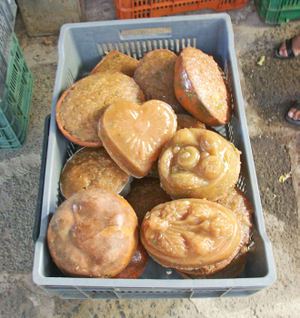
Ates de membrillo, fresh from the molds and just beautiful–and of course, delicious.
I stopped to talk with Alfredo Jiménez García, who was busy wrapping the smooth bricks of membrillo in plastic wrap. He told me that he does a little of everything, from waiting on customers to working in the back room.
Back outside, Sra. Zaragoza showed me the neatly shelved bottles of ponche. "It's all natural. It only contains fruit, sugar, water, and alcohol. We make it and bottle it at home. It costs $30 pesos for a liter. And here is the conserva. The jars, ??about a kilo each, ??sell for $40 pesos." The color of the preserved fruits in syrup was beautifully dark red. "And of course we also make empanadas (a sweet Mexican turnover) filled with ate." She pointed to the plastic-wrapped packages on the shelves. "They're delicious for breakfast or dessert."
As I was preparing to leave, Sra. Zaragoza handed me a bag. "Take these with you with our compliments," she smiled. "You and your friends will enjoy our homemade ate martajada and our empanadas." I was delighted with her generous gift.
On the road north toward Guadalajara, I decided to detour the short distance to Atotonilquillo to find out the dates of the Fiestas del Membrillo. I kept my eye on the odometer and saw that it is only seven kilometers from the La Barca exit off the Chapala/Guadalajara highway to the membrillo vendors' booths along the main road in the little village.
I pulled up to the first booth along the road. The teenage boy behind the counter squinted slightly and wrinkled his nose in thought when I asked if he knew the dates for the quince festival. "Well, my uncle wrote the song for it, and the song says it's always on August 16. It only lasts two days, but it's a lot of fun. You should come."
"So it's not a nine-day fiesta, like so many are?" I'd never heard of a two-day fiesta, but then it's quite unusual to find a fiesta devoted to a fruit.
"Oh no, it's only two days. Be sure you don't miss it, and bring all your friends. We'll have a great time, and you can hear my uncle's song." He grinned proudly.
"You can count on it, son. I'll look for you at the fiestas." We shook hands and I drove back toward the Chapala/Guadalajara highway. The package that Sra. Zaragoza had given me sent the tempting fragrance of sweet membrillo wafting toward the driver's seat, the vision of the upcoming fiesta danced in my head, and the day was bright with promise.
Looking for a tailored-to-your-interests specialized tour in Mexico? Click here: Tours

